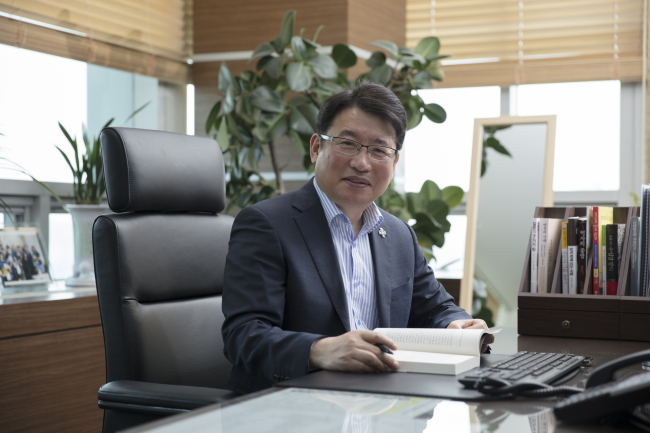With winter vacation looming, students are filled with excitement, but sadly the reality tells a different tale for Korean students. Instead of playing with friends during break, students are pushed to excel academically by volunteering, attending foreign language camps and preparing for next semester’s classes.
Children have no time to spare, as parents organize activities that take place throughout the day, while asking them to maintain good health, a sound mind and autonomy. All of this may be asking too much of children to handle all at once.
On Dec. 17, I flew to Tokyo, Japan, to hear and learn more about the experience of a community and the revival of cities. I was able to ponder about the meaning of “space and free time” after visiting Shibuya’s Haru-no-ogawa Adventure Park and Tokyo Toy Museum.
Children have no time to spare, as parents organize activities that take place throughout the day, while asking them to maintain good health, a sound mind and autonomy. All of this may be asking too much of children to handle all at once.
On Dec. 17, I flew to Tokyo, Japan, to hear and learn more about the experience of a community and the revival of cities. I was able to ponder about the meaning of “space and free time” after visiting Shibuya’s Haru-no-ogawa Adventure Park and Tokyo Toy Museum.

Haru-no-ogawa Play Park was established in 2004, when CEO Komizu realized his dream of offering children a place to roam freely, play creatively in nature and think independently. The park is located within a residential section of Shibuya, Toyko, allowing parents and children to walk to the park conveniently.
Parents do not have a role in this park as children run around barefoot and roll around in the dirt. In contrast to Korean children, the Japanese children play around with tools, such as saws and hammers, or fire, which might be banned from playgrounds in Korea. Some children create their own secret hideout using different tools. Despite the potential danger posed by these tools, Shibuya’s adventure park has been safely managed for 13 years, mainly due to play leaders who are always there for the children.
Play leaders are responsible for watching the children play. They also play with them sometimes and eliminate danger, such as nails sticking out from the ground. When a child gets hurt, play leaders must respond quickly with emergency medical attention to protect the child.
The play park also provides parents with free time. Adults can gather in small groups to share their daily life experiences and enjoy leisure activities. Both children and parents can benefit from the space and free time outside of their busy schedules.
Tokyo Toy Museum allows the same benefits of space and free time. Rebuilt from a school that closed down years ago, the museum welcomes 150,000 visitors annually. All toys housed in the museum are hand-crafted out of trees grown in Japan by professional toy craftsmen. Situated at the city’s core, the museum provides a space where children and parents can play with trees.
Here, children can touch anything, lie down, sit and roam freely. Parents are there to merely watch out for their children’s safety. This is exactly what I mean by a “museum with space.”
Instead of play leaders, Tokyo Toy Museum hires volunteer workers, who are mostly parents living in the neighborhood. “The greatest assets of our museum is the relationship between the volunteer and children as well as volunteer and parents,” the museum’s director said. As a child grows up, the relationships that are kept intact through many years essentially foster support among neighbors and the community.
Boasting a decade of experience, both places succeeded in bolstering ties with nearby schools and currently manage schools through an extensive play-education program.
This partnership in turn created a close-knit social network in the neighborhood and allowed everyone to feel included. Many countries including Japan have started to embrace the revival of cities and communities, using old, abandoned schools and transforming them into cultural places.
The adventure park and toy museum overlap in their key principle of “we raise our own children,” handing the residents of neighborhoods the power of control and responsibility. Both places reflect what residents have always wished for -- free time and space in their busy lives. Furthermore, by enjoying the space, people can start focusing on the vital relationships in their lives.
To know when a village with “space” is successful, it is important for all local residents to feel at home when visiting these public spaces and to be able to forget at least temporarily the difficulties of everyday life.
If various facilities provide the right space efficiently, then the absence of a revival program itself could become a program. A “program-less program” could allow residents to nurture their creativity and freedom. Therefore, I hope a village of this kind can be established around us, enriching our lives with warmth.
By Kim Gyeong-pyo
President of Gyeonggi Do Provincial Institute for Lifelong Learning
-
Articles by Korea Herald




















![[Today’s K-pop] BTS pop-up event to come to Seoul](http://res.heraldm.com/phpwas/restmb_idxmake.php?idx=642&simg=/content/image/2024/04/17/20240417050734_0.jpg&u=)